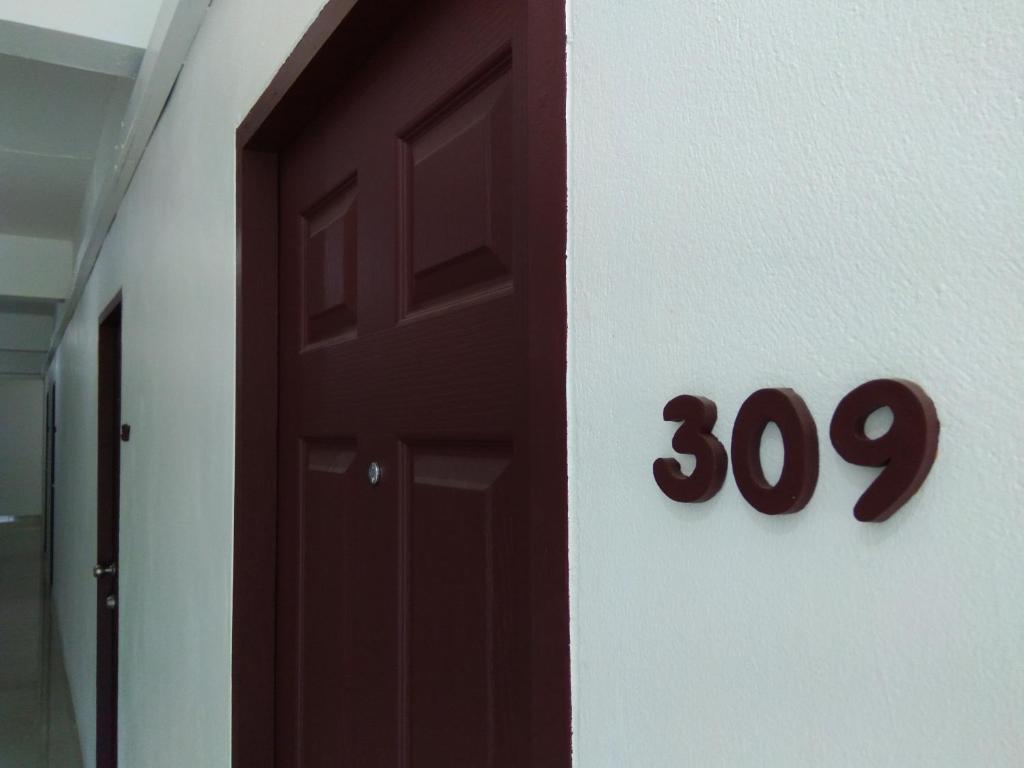
The
Art of Hotel Room Number Allocation
The perfect interplay of rules, culture, and management — exploring the psychology, cultural sensitivity, and operational wisdom behind the numbers.
Key Insights
Room number allocation is far more than a simple numerical sequence — it is a comprehensive art blending architectural logic, cultural sensitivity, and psychology.
Scope of Study
- • Basic numbering rules and systems
- • Differences in Eastern and Western number cultures
- • Modern PMS intelligent management
Introduction
The Science and Art Behind Numbers
Hotel room number allocation is far more than a simple numerical order — it is a comprehensive art that integrates architectural logic, cultural sensitivity, psychology, and efficient operations management. A well-designed numbering system not only helps guests easily find their rooms and improves the stay experience, but also avoids cultural taboos, prevents unnecessary conflicts, and even contributes to refined hotel management and revenue optimization.
This article explores three core dimensions of hotel room number allocation: the fundamental rules and logical framework, the impact of cultural and psychological factors, and intelligent allocation strategies in modern hotel management — revealing the depth behind what appears to be a simple subject.
1. Rules and Basic Logic of Room-Number Design
Building an Efficient Wayfinding System
Hotel room-numbering schemes follow an internal logic designed for clarity, efficiency, and instant comprehension. At its core, the logic translates physical space—floors, corridors, and room locations—into a concise numeric code that allows both guests and staff to pinpoint any room without delay.
1.1 Structure of the Number
Room numbers are typically composed of two core elements: a floor code and a room sequence number. This structured coding system allows the number itself to convey the room’s approximate location within the building, forming the foundation for the digitalization of hotel space management.
Floor + Room Combination
The most common method prefixes the room number with the floor number. For instance, 1208 normally means the 12th floor, 8th room on that floor.
The system is self-explanatory: guests can read the number and immediately know which floor to exit on, greatly reducing confusion when locating their room.
Digit Length & Order
The total number of digits depends on the hotel’s total floors and rooms per floor. A 10-story property with 20 rooms per level might use a three-digit code.
Sequencing begins at the elevator lobby or main corridor and progresses clockwise or counter-clockwise, ensuring consecutive numbering that mirrors physical layout.
Room Number Composition Example
Logic Behind Room Numbering: Conveying physical location information through a numeric code [114]
1.2 Intra-Floor Numbering Logic
Sequential Geographic Order
Numbering starts at the elevator or stair core and proceeds along one side of the corridor, then loops back along the opposite side.
Odd-Even Zoning
One side of the corridor receives exclusively odd numbers, the other exclusively even numbers.
Special Room-Type Numbering
Suites and specialty room categories are assigned a separate numeric sequence to highlight their exclusivity.
Benefits of Odd-Even Zoning
Guests only need to remember whether their room number is odd or even to know which side of the corridor to turn to, eliminating back-and-forth searching and significantly shortening the walk—especially effective on long-corridor floors.
1.3 Numbering Differences Across Hotel Types
| Hotel Type | Architectural Features | Numbering System Characteristics | Example |
|---|---|---|---|
| Business Hotel | Urban high-rise tower, regular structure | Standard "floor + room" format; executive floors or suites placed on upper levels to signal prestige | 1205, 2508 (Executive Floor) |
| Resort Hotel | Multiple low-rise buildings scattered across a large site | Letters distinguish different buildings or zones; names often reflect views or functions | Villa A-101 |
| Boutique Hotel / B&B | Small scale, emphasis on individuality and design | Breaks traditional numeric patterns; uses creative names or blends numbers with playful phrases | "Starry Sky", "414+" |
Comparative Overview of Room-Numbering Differences Across Hotel Types [10] [4]
2. The Impact of Cultural Psychology on Room-Number Assignment
Cultural Codes and Psychological Cues Behind the Digits
2.1 Numerical Symbolism in Eastern Cultures
Chinese Culture: Auspicious and Taboo Numbers
Japanese Culture: A Double Taboo
Mechanism of Psychological Influence
-
1
Digital Cognition
Guest sees the number
-
2
Cultural Background
Triggers cultural association
-
3
Emotional Reaction
Positive or negative feelings
-
4
Guest Satisfaction
Overall experience impacted
Cross-Cultural Psychological Mapping of Numbers [130]
2.2 Numerical Superstitions in Western Culture
Number "13"
Originated from the Christian "Last Supper" legend
Known as "Triskaidekaphobia" (fear of the number 13)
Number "666"
The "Number of the Beast" in The Book of Revelation
Symbolizes evil and calamity
Number "420"
Special meanings in North American pop culture
Associated with cannabis culture
Skipped floors in Western architecture
This fear of "13" is so deeply rooted in Western society that many hotels and high-rise buildings will directly skip the 13th floor, jumping from the 12th to the 14th. Likewise, room numbers containing "13," such as Room 13 or 1301, are avoided.
2.3 Impact of Number Psychology on Guest Experience
Positive psychological suggestion
When guests receive a room number that's considered auspicious — such as "888" or "666" in Chinese culture — they often feel delighted and satisfied.
- Increase anticipation before check-in
- Enhance satisfaction
- Improve tolerance level
- Encourage word-of-mouth promotion
Negative emotional impact
If a guest is assigned a room number that is considered unlucky — such as "13" or "444" — they may feel uneasy, anxious, or even fearful.
- Trigger feelings of discomfort
- Increase risk of complaints
- Affect sleep quality
- Reduce overall satisfaction
3. Room Number Allocation Strategies in Hotel Management
A perfect combination of technology, human-centred care and operations
3.1 The Role of Hotel Management Systems
Real-time room status management
PMS systems provide a centralized platform that clearly displays real-time room status, including vacant rooms, dirty rooms, stayover rooms, and rooms under maintenance.
Intelligent room assignment
Based on guests’ booking information and historical preferences, the system can automatically recommend the most suitable room, enhancing personalized service levels.
Cultural taboo handling
The system can pre-set number combinations that need to be skipped, automatically avoiding unlucky numbers while ensuring consistency and standardization in numbering rules.
Intelligent functions of the OPERA PMS system
The OPERA PMS system offers both "Auto" and "Manual" room assignment modes. Receptionists can easily cancel the system’s auto-assigned room number and manually select a more suitable room for the guest. This human-machine collaboration combines the efficiency and accuracy of technology with the flexibility and personal touch of service.
3.2 Room Assignment Skills at the Front Desk
Front-Desk Workflow
Guest arrives
Identify culture
Assign room
Confirm & finish
Professional room-assignment decision-making process for receptionists [114]
Cultural sensitivity training
Experienced receptionists quickly determine a guest’s likely cultural background through name, accent, passport information, or brief conversation.
- Identify guest’s cultural background
- Anticipate number preferences
- Proactively avoid cultural conflicts
Complaint-handling techniques
When guests express dissatisfaction due to their room number, receptionists should remain calm and polite, patiently listening to their concerns.
- Offer an alternative immediately
- Resolve conflict through compensation
- Turn it into an opportunity to showcase service quality
3.3 Practical Considerations in Hotel Operations
Impact of skipping numbers
While skipping unlucky numbers can fulfill guests’ psychological needs, from a purely operational management perspective, it does introduce certain inconveniences.
Modern PMS systems have significantly reduced these issues.
Clever renaming
Some hotels label the 13th floor as "12A" or "12B," maintaining the physical floor while avoiding the number "13" in name.
This needs to be handled carefully to avoid confusion or misunderstanding.
Balancing strategy
Strictly follow cultural taboos for key numbers with broad impact, while handling less significant intermediate numbers more flexibly.
Precise positioning and refined management
Conclusion
The art of hotel room number allocation perfectly embodies the essence of modern hotel management — it must follow a scientific logical system while respecting human cultural needs; it must leverage advanced technology while preserving warmth and care in service. Behind this seemingly small detail lies the industry's deep understanding and pursuit of the ultimate guest experience.




